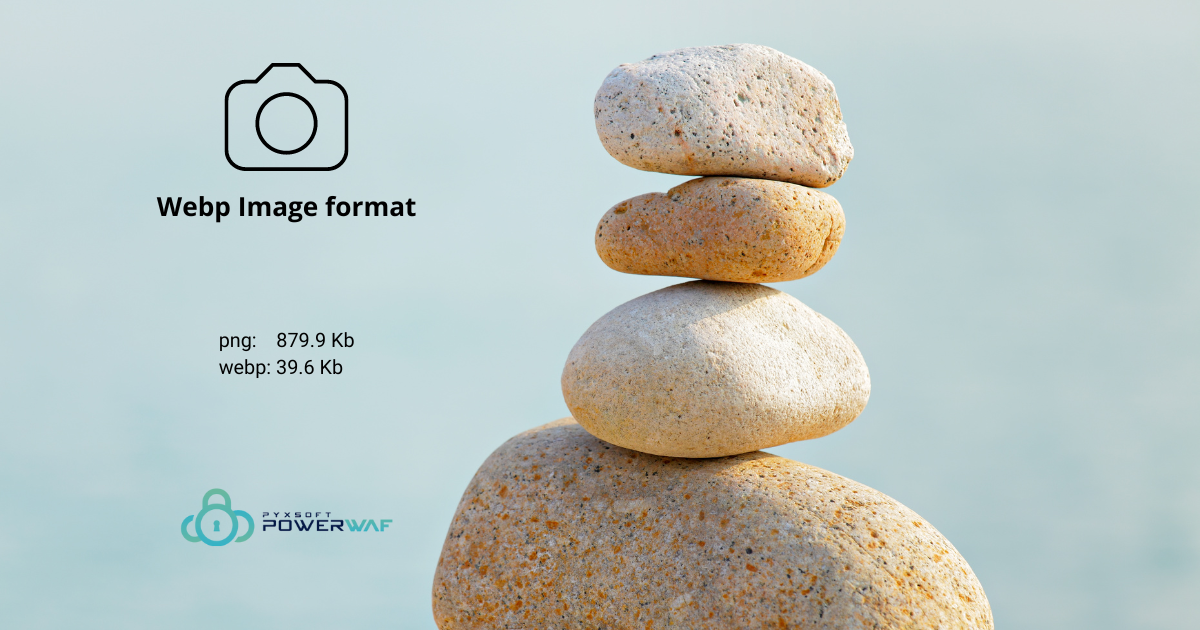
WebP is a modern image format developed by Google that offers significant advantages over traditional image formats such as JPEG and PNG. In this article, we'll explore what WebP is, how it reduces image size, and how it can impact website speed. We'll also look at how to manually convert JPG images to WebP and how services like PowerWAF CDN can optimize image delivery.
What is the WebP Image Format?
WebP is an image format that uses a combination of advanced compression techniques to reduce image file size without compromising quality. It was first introduced by Google in 2010 as an open-source project, and it has gained popularity in recent years as a way to optimize website speed.
One of the key features of WebP is its ability to use both lossless and lossy compression, making it suitable for a wide range of use cases. Additionally, WebP supports alpha transparency and animated images, making it a versatile option for modern websites.
Why Are WebP Images Smaller?
WebP images are smaller than other image formats because of the compression techniques they use. These techniques include:
Predictive coding: This involves predicting the values of pixels based on surrounding pixels, which reduces the amount of information that needs to be stored.
Transform coding: This involves applying a mathematical transform to the image data to convert it into a more compact representation.
Entropy coding: This involves using variable-length codes to represent the transformed image data, which allows more frequent values to be represented using shorter codes.
Overall, these compression techniques result in smaller file sizes while maintaining high image quality.
How Does WebP Impact Website Speed?
WebP can have a significant impact on website speed by reducing the size of images that need to be loaded. This can result in faster page load times and a better user experience.
Studies have shown that using WebP images can reduce image file size by up to 34% compared to JPEG images and up to 26% compared to PNG images. This means that images can be loaded faster, especially on slower internet connections.
How to Manually Convert JPG Images to WebP
To manually convert JPG images to WebP, you can use a command-line tool called cwebp, which is provided by Google as part of the WebP project. Here are the basic steps:
Install the cwebp tool on your computer.
Open a terminal or command prompt and navigate to the directory where your JPG images are stored. Use the cwebp tool to convert the images to WebP format. For example, you can use the following command:
cwebp -q 80 myimage.jpg -o myimage.webp
The -q option specifies the quality level (80 in this example) and the -o option specifies the output file name.
Not All Browsers Support WebP
It's important to note that not all browsers support the WebP format. While most modern browsers, including Google Chrome, Mozilla Firefox, and Microsoft Edge, support WebP, older browsers may not. To ensure that your website works for all users, it's a good idea to provide fallback images in other formats such as JPEG or PNG.
The Convenience of Using Services Like PowerWAF CDN
Services like PowerWAF CDN can optimize image delivery by automatically converting images to WebP format and delivering them only to browsers that support WebP. This can result in faster loading times and a better user experience without the need for manual conversion or fallback images.
Conclusion
In conclusion, WebP is a powerful image format that can help optimize website speed by reducing image file size. By understanding how WebP works and how to convert images to WebP format, you can ensure that your website is optimized for fast loading times and a great user experience. Additionally, services like PowerWAF CDN can make it even easier to take advantage of the benefits of WebP by automating the conversion process and delivering optimized images to users. With WebP and other optimization techniques, you can create a website that loads quickly and efficiently, keeping visitors engaged and happy.
Start your 7 days Free Trial
Implement WAF & CDN for your websites